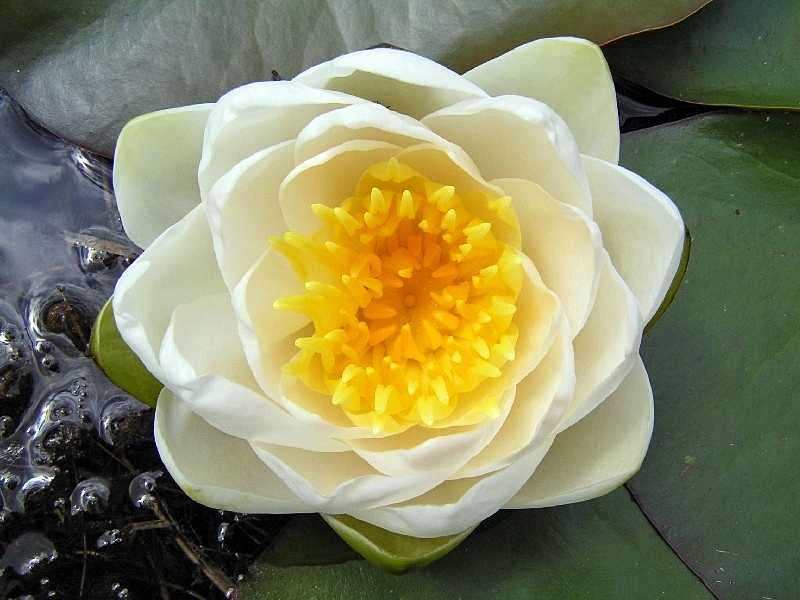|
Fasciolopsiasis
Fasciolopsiasis results from an infection by the trematode '' Fasciolopsis buski'', the largest intestinal fluke of humans (up to 7.5 cm in length). Signs and symptoms Most infections are light, almost asymptomatic. In heavy infections, symptoms can include abdominal pain, chronic diarrhea, anemia, ascites, toxemia, allergic responses, sensitization caused by the absorption of the worms' allergenic metabolites can lead to intestinal obstruction and may eventually cause death of the patient. Cause The parasite infects an amphibic snail ('' Segmentina nitidella, Segmentina hemisphaerula, Hippeutis schmackerie, Gyraulus, Lymnaea, Pila, Planorbis ( Indoplanorbis)'') after being released by infected mammalian feces; metacercaria released from this intermediate host encyst on aquatic plants like water spinach, which are eaten raw by pigs and humans. Water itself can also be infective when drunk unboiled ("Encysted cercariae exist not only on aquatic plants, but also on the ... [...More Info...] [...Related Items...] OR: [Wikipedia] [Google] [Baidu] |
Fasciolopsis Buski
''Fasciolopsis'' () is a genus of trematodes. They are also known as giant intestinal flukes. Only one species is recognised: ''Fasciolopsis buski''. It is a notable parasite of medical importance in humans and veterinary importance in pigs. It is prevalent in Southern and Eastern Asia. The term for infestation with ''Fasciolopsis'' is fasciolopsiasis. ''Fasciolopsis buski'' ''Fasciolopsis buski'' is commonly called the giant intestinal fluke, because it is an exceptionally large parasitic fluke, and the largest known to parasitise humans. Its size is variable and a mature specimen might be as little as 2 cm long, but the body may grow to a length of 7.5 cm and a width of 2.5 cm. It is a common parasite of humans and pigs and is most prevalent in Southern and Southeastern Asia. It is a member of the family Fasciolidae in the order Plagiorchiida. The Echinostomida are members of the class Trematoda, the flukes. The fluke differs from most species that parasi ... [...More Info...] [...Related Items...] OR: [Wikipedia] [Google] [Baidu] |
Praziquantel
Praziquantel (PZQ), sold under the brandname Biltricide among others, is a medication used to treat a number of types of parasitic worm infections in mammals, birds, amphibians, reptiles, and fish. In humans specifically, it is used to treat schistosomiasis, clonorchiasis, opisthorchiasis, tapeworm infections, cysticercosis, echinococcosis, paragonimiasis, fasciolopsiasis, and fasciolosis. It should not be used for worm infections of the eye. It is taken by mouth. Side effects in humans may include poor coordination, abdominal pain, vomiting, headache, and allergic reactions. While it may be used during pregnancy, it is not recommended for use during breastfeeding. Praziquantel is in the anthelmintic class of medications. It works partly by affecting the function of the worm's sucker. Praziquantel was approved for medical use in the United States in 1982. It is on the World Health Organization's List of Essential Medicines. Medical uses Praziquantel is used to treat ... [...More Info...] [...Related Items...] OR: [Wikipedia] [Google] [Baidu] |
Gyraulus
''Gyraulus'' is a genus of small, mostly air-breathing, freshwater snails, aquatic pulmonate gastropod mollusks in the family Planorbidae, the ram's horn snails. The genus ''Gyraulus'' is known from the Early Cretaceous to the present. Fossils attributed to ''Gyraulus'' sp. have been found in the lakebottom sediments of the Yixian Formation in China, dating to 125 million years ago.Pan, H. and Zhu, X. (2007). "Early Cretaceous non-marine gastropods from the Xiazhuang Formation in North China." ''Cretaceous Research'', 28(2): 215-224. The minute species ''Gyraulus crista'', although technically a pulmonate gastropod, does not use air for respiration, but instead has a mantle cavity which has much water. Distribution The distribution of this genus is Holarctic. Habitat These snail snails live on water plants in freshwater. Shell description Shell of the species within this genus are small, and are mostly almost planispiral in their coiling. Species Species within the ge ... [...More Info...] [...Related Items...] OR: [Wikipedia] [Google] [Baidu] |
Drug
A drug is any chemical substance that causes a change in an organism's physiology or psychology when consumed. Drugs are typically distinguished from food and substances that provide nutritional support. Consumption of drugs can be via inhalation, injection, smoking, ingestion, absorption via a patch on the skin, suppository, or dissolution under the tongue. In pharmacology, a drug is a chemical substance, typically of known structure, which, when administered to a living organism, produces a biological effect. A pharmaceutical drug, also called a medication or medicine, is a chemical substance used to treat, cure, prevent, or diagnose a disease or to promote well-being. Traditionally drugs were obtained through extraction from medicinal plants, but more recently also by organic synthesis. Pharmaceutical drugs may be used for a limited duration, or on a regular basis for chronic disorders. Pharmaceutical drugs are often classified into drug classes—groups of r ... [...More Info...] [...Related Items...] OR: [Wikipedia] [Google] [Baidu] |
Fasciola Hepatica
''Fasciola hepatica'', also known as the common liver fluke or sheep liver fluke, is a parasitism, parasitic trematode (fluke or flatworm, a type of helminth) of the class (biology), class Trematoda, phylum Platyhelminthes. It infects the livers of various mammals, including humans, and is transmitted by sheep and cattle to humans the world over. The disease caused by the fluke (flatworm), fluke is called fasciolosis or fascioliasis, which is a type of helminthiasis and has been classified as a neglected tropical disease. Fasciolosis is currently classified as a plant/food-borne trematode infection, often acquired through eating the parasite's Trematode life cycle stages, metacercariae encysted on plants. ''F. hepatica'', which is distributed worldwide, has been known as an important parasite of sheep and cattle for decades and causes significant economic losses in these livestock species, up to £23 million in the UK alone. Because of its relatively large size and economic impor ... [...More Info...] [...Related Items...] OR: [Wikipedia] [Google] [Baidu] |
Vomitus
Vomiting (also known as emesis and throwing up) is the involuntary, forceful expulsion of the contents of one's stomach through the mouth and sometimes the nose. Vomiting can be the result of ailments like food poisoning, gastroenteritis, pregnancy, motion sickness, or hangover; or it can be an after effect of diseases such as brain tumors, elevated intracranial pressure, or overexposure to ionizing radiation. The feeling that one is about to vomit is called nausea; it often precedes, but does not always lead to vomiting. Impairment due to alcohol or anesthesia can cause inhalation of vomit, leading to suffocation. In severe cases, where dehydration develops, intravenous fluid may be required. Antiemetics are sometimes necessary to suppress nausea and vomiting. Self-induced vomiting can be a component of an eating disorder such as bulimia, and is itself now classified as an eating disorder on its own, purging disorder. Complications Aspiration Vomiting is dangerous if ... [...More Info...] [...Related Items...] OR: [Wikipedia] [Google] [Baidu] |
Feces
Feces ( or faeces), known colloquially and in slang as poo and poop, are the solid or semi-solid remains of food that was not digested in the small intestine, and has been broken down by bacteria in the large intestine. Feces contain a relatively small amount of metabolic waste products such as bacterially altered bilirubin, and dead epithelial cells from the lining of the gut. Feces are discharged through the anus or cloaca during defecation. Feces can be used as fertilizer or soil conditioner in agriculture. They can also be burned as fuel or dried and used for construction. Some medicinal uses have been found. In the case of human feces, fecal transplants or fecal bacteriotherapy are in use. Urine and feces together are called excreta. Skatole is the principal compound responsible for the unpleasant smell of feces. Characteristics The distinctive odor of feces is due to skatole, and thiols (sulfur-containing compounds), as well as amines and carboxylic aci ... [...More Info...] [...Related Items...] OR: [Wikipedia] [Google] [Baidu] |
Trematoda
Trematoda is a class of flatworms known as flukes. They are obligate internal parasites with a complex life cycle requiring at least two hosts. The intermediate host, in which asexual reproduction occurs, is usually a snail. The definitive host, where the flukes sexually reproduce, is a vertebrate. Infection by trematodes can cause disease in all five traditional vertebrate classes: mammals, birds, amphibians, reptiles, and fish. Etymology Trematodes are commonly referred to as flukes. This term can be traced back to the Old English name for flounder, and refers to the flattened, rhomboidal shape of the organisms. Taxonomy There are 18,000 to 24,000 known species of trematodes, divided into two subclasses — the Aspidogastrea and the Digenea. Aspidogastrea is the smaller subclass, comprising 61 species. These flukes mainly infect bivalves and bony fishes.https://www.biotaxa.org/Zootaxa/article/view/zootaxa.3918.3.2 Digenea — which comprise the majority of trematodes — are f ... [...More Info...] [...Related Items...] OR: [Wikipedia] [Google] [Baidu] |
Water Spinach
''Ipomoea aquatica'', widely known as water spinach, is a semi- aquatic, tropical plant grown as a vegetable for its tender shoots. ''I. aquatica'' is generally believed to have been first domesticated in Southeast Asia. It is widely cultivated in Southeast Asia, East Asia, and South Asia. It grows abundantly near waterways and requires little to no care. Description ''Ipomoea aquatica'' grows in water or on moist soil. Its stems are or longer, rooting at the nodes, and they are hollow and can float. The leaves vary from typically sagittate (arrow head-shaped) to lanceolate, long and broad. The flowers are trumpet-shaped, in diameter, and usually white in colour with a mauve centre. Propagation is either by planting cuttings of the stem shoots, which will root along nodes, or by planting the seeds from flowers that produce seed pods. Names ''Ipomoea aquatica'' is widely known as kangkong (also spelled kangkung), its common name in Maritime Southeast Asia, which possi ... [...More Info...] [...Related Items...] OR: [Wikipedia] [Google] [Baidu] |
Aquatic Plant
Aquatic plants are plants that have adapted to living in aquatic environments ( saltwater or freshwater). They are also referred to as hydrophytes or macrophytes to distinguish them from algae and other microphytes. A macrophyte is a plant that grows in or near water and is either emergent, submergent, or floating. In lakes and rivers macrophytes provide cover for fish, substrate for aquatic invertebrates, produce oxygen, and act as food for some fish and wildlife. Macrophytes are primary producers and are the basis of the food web for many organisms. They have a significant effect on soil chemistry and light levels as they slow down the flow of water and capture pollutants and trap sediments. Excess sediment will settle into the benthos aided by the reduction of flow rates caused by the presence of plant stems, leaves and roots. Some plants have the capability of absorbing pollutants into their tissue. Seaweeds are multicellular marine algae and, although their ecologic ... [...More Info...] [...Related Items...] OR: [Wikipedia] [Google] [Baidu] |
Intermediate Host
In biology and medicine, a host is a larger organism that harbours a smaller organism; whether a parasitic, a mutualistic, or a commensalist ''guest'' (symbiont). The guest is typically provided with nourishment and shelter. Examples include animals playing host to parasitic worms (e.g. nematodes), cells harbouring pathogenic (disease-causing) viruses, a bean plant hosting mutualistic (helpful) nitrogen-fixing bacteria. More specifically in botany, a host plant supplies food resources to micropredators, which have an evolutionarily stable relationship with their hosts similar to ectoparasitism. The host range is the collection of hosts that an organism can use as a partner. Symbiosis Symbiosis spans a wide variety of possible relationships between organisms, differing in their permanence and their effects on the two parties. If one of the partners in an association is much larger than the other, it is generally known as the host. In parasitism, the parasite benefits at ... [...More Info...] [...Related Items...] OR: [Wikipedia] [Google] [Baidu] |
Cercaria
A cercaria (plural cercariae) is the larval form of the trematode Trematoda is a Class (biology), class of flatworms known as flukes. They are obligate parasite, obligate internal Parasitism, parasites with a complex biological life cycle, life cycle requiring at least two Host_(biology), hosts. The intermedia ... class of parasites. It develops within the germinal cells of the sporocyst or redia. A cercaria has a tapering head with large penetration glands. It may or may not have a long swimming "tail", depending on the species. The motile cercaria finds and settles in a host where it will become either an adult, or a mesocercaria, or a metacercaria, according to species. Rotifers ('' Rotaria rotatoria'') produce a chemical, Schistosome Paralysis Factor, suppressing cercaria swimming and reducing infections.{{cite journal , editor1-last=Khosla , editor1-first=Chaitan , last1=Gao, first1=Jiarong, last2=Yang, first2=Ning, last3=Lewis, first3=Fred A., last4=Yau, first4=Peter, l ... [...More Info...] [...Related Items...] OR: [Wikipedia] [Google] [Baidu] |








.jpg)